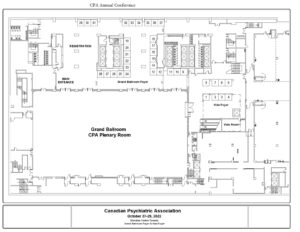W36 – Strategies for Early Identification of Bipolar Disorder
Le samedi 21 octobre
15:45 – 16:45 (1 hr)
Salle de réunion : Port McNeill (4th floor – North Tower)
Kamyar Keramatian*, MD, MSc, FRCPC Alexander Levit, MD, PhD
Rôles CanMEDS :
- Expert médical
- Promoteur de la santé
- Érudit
À la conclusion de cette activité, les participants seront en mesure de : 1) Learn about current evidence on the duration of untreated illness in bipolar disorder (BD); 2) Understand pathways to treating youth with BD and factors that influence the time taken for each stage of these pathways; and 3) Understand potential facilitators and barriers to early identification of BD, as well as implications for future research.
Bipolar disorder (BD) affects over two percent of Canadians and is the fourth leading cause of disability among people aged 10 to 24 years. However, despite its high prevalence and significant disability burden, BD often goes unrecognized for several years. A recently published Canadian multicentre naturalistic study showed that the median delay between the first mood episode and the accurate diagnosis of BD in Canada is eight years. Even more concerning was the median delay of 15 years for pediatric-onset BD. Such prolonged diagnostic delays usually result in a subsequent delay in appropriate treatment initiation, which is linked to poor clinical and functional outcomes.
This interactive workshop will begin by exploring participants’ perspectives on the controversy surrounding overdiagnosis versus underdiagnosis of BD, especially among youth, and review current evidence on the duration of untreated illness in BD. We will then provide a multidimensional conceptual framework to explore various components of delay in diagnosing and treating youth with BD and identify patient, disease, and health care system or provider factors influencing each part. We conclude the workshop by discussing potential facilitators and barriers to early identification of BD and implications for future research and public policy.
Références :
- Scott SE, Walter FM, Webster A, et al. The model of pathways to treatment: conceptualization and integration with existing theory. Br J Health Psychol 2013;18(1):45–65.
- Keramatian K, Pinto JV, Schaffer A, et al. Clinical and demographic factors associated with delayed diagnosis of bipolar disorder: data from Health Outcomes and Patient Evaluations in Bipolar Disorder (HOPE-BD) study. J Affect Disord. 2022 Jan 1;296:506-513. doi: 10.1016/j.jad.2021.09.094. Epub 2021 Oct 1. PMID: 34606817.

